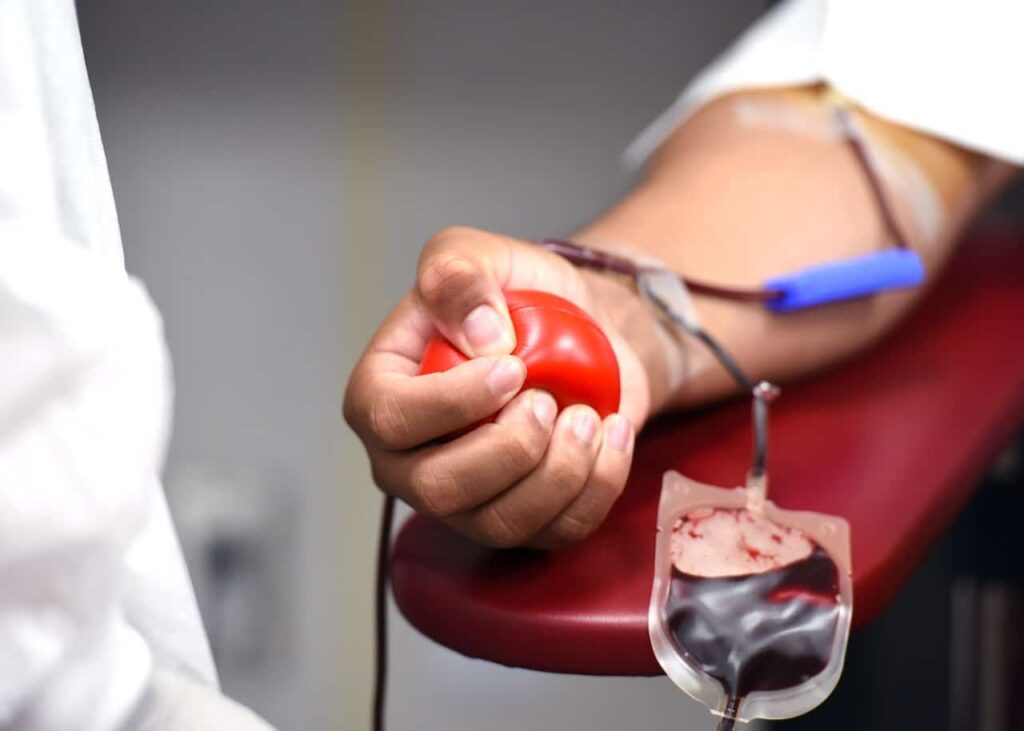Thalassemia, a genetic blood disorder, affects millions of people worldwide. Understanding its symptoms, especially in their minor form, is crucial for early detection and management. In this guide, we’ll explore what thalassemia is, and its types, and specifically focus on thalassemia minor symptoms, along with essential information about diagnosis, treatment, and specialists.
Definition
Thalassemia is related to a group of inherited blood disorders defined by abnormal hemoglobin production, leading to anemia. Hemoglobin is a protein in red blood cells that carries oxygen throughout the body. When hemoglobin production is disrupted, it affects the red blood cells’ ability to function properly, leading to various health complications.
Thalassemia Minor Symptoms
Thalassemia minor, also known as thalassemia trait, is a milder form of the disorder. Most people with thalassemia minor symptoms may not have severe symptoms, but they may show the following:
- Mild Anemia: Thalassemia minor can cause mild anemia, characterized by fatigue, weakness, and pale skin.
- Microcytosis: This refers to smaller than normal red blood cells, which may be detected through a complete blood count (CBC) test.
- Mild Jaundice: Some individuals with thalassemia minor symptoms may experience yellowing of the skin or eyes due to increased breakdown of red blood cells.
Thalassemia Major
A Serious Condition
Thalassemia major, also known as Cooley’s anemia, is a severe form of the disorder that requires ongoing medical care. Symptoms typically appear within the first two years of life and may include severe anemia, growth delays, bone deformities, and organ damage.
Thalassemia Types
Thalassemia, a group of inherited blood disorders, manifests in different types, each with its own characteristics and severity. Understanding these types is crucial for accurate diagnosis and appropriate management. The primary types of thalassemia include:
- Alpha Thalassemia: Alpha thalassemia results from mutations or deletions in the genes that code for alpha-globin proteins. Depending on the number of affected genes, alpha thalassemia can be classified into four main categories:
- Silent Carrier (Alpha Thalassemia Trait): Individuals with a mutation in one alpha-globin gene typically do not experience symptoms and are considered carriers of the trait.
- Alpha Thalassemia Minor symptoms: In this form, two out of four alpha-globin genes are affected. Symptoms are usually mild and may include mild anemia and microcytosis.
- Hemoglobin H Disease: Three out of four alpha-globin genes are affected, leading to moderate to severe anemia, jaundice, and possible enlargement of the spleen.
- Beta Thalassemia: Beta thalassemia arises from mutations in the genes responsible for beta-globin protein production. Similar to alpha thalassemia, it encompasses various forms:
- Thalassemia Minor (Beta Thalassemia Trait): Individuals with one mutated beta-globin gene typically do not exhibit symptoms or may experience mild anemia.
- Beta Thalassemia Intermedia: This form is characterized by moderate to severe anemia, which may require occasional blood transfusions but not as frequently as in thalassemia major.
- Other Variants: Apart from alpha and beta thalassemia, there are rare variants and combinations of thalassemia mutations that can result in unique clinical presentations. These variants may require specialized diagnostic approaches and tailored treatment plans.
Thalassemia Trait
Thalassemia trait is usually asymptomatic or may cause mild symptoms. It’s important to note that individuals with thalassemia trait are carriers of the genetic mutation and may pass it on to their children. If both parents are carriers, there’s a risk of their children inheriting a more severe form of the disorder.
Diet for patient
- Lean meats
- Poultry
- Fish
- Beans
- Lentils
- Tofu
- Leafy green vegetables
- Citrus fruits
Diagnosing Thalassemia
Diagnosing thalassemia involves a combination of medical history, physical examination, and laboratory tests. Common diagnostic methods include:
- Blood Tests: A CBC can reveal abnormal red blood cell indices, indicating the possibility of thalassemia.
- Hemoglobin Electrophoresis: This test separates different types of hemoglobin and can identify abnormal hemoglobin variants characteristic of thalassemia.
- Genetic Testing: Genetic tests can confirm the presence of specific mutations associated with thalassemia.
Treatment
Treatment for thalassemia minor symptoms typically focuses on managing and preventing complications. It may include:
- Iron Supplements: While iron deficiency is not a primary concern in thalassemia minor symptoms, iron supplements may be prescribed if iron levels are low.
- Regular Monitoring: Individuals with thalassemia minor symptoms should undergo regular check-ups to monitor their blood counts and overall health.
- Genetic Counseling: For individuals planning to start a family, genetic counseling can provide valuable information about the risk of passing thalassemia trait to their children.
Thalassemia Specialist
Managing thalassemia, whether minor or major, often requires the expertise of healthcare professionals specializing in blood disorders. A thalassemia specialist, typically a hematologist, can provide personalized treatment plans and ongoing support.
Thalassemia Day
Thalassemia Awareness Day, observed on May 8th, aims to raise awareness about thalassemia and the challenges faced by individuals living with the disorder. It’s an opportunity to educate the public, support affected individuals, and advocate for improved access to healthcare services.
Although thalassemia minor symptoms may be moderate at first, it is crucial to comprehend its implications in order to recognize it early and treat it properly. People with thalassemia trait can have happy, productive lives with a reduced chance of impacts if they are aware of the symptoms, seek medical attention as soon as possible, and receive the necessary support. The purpose of Thalassemia Awareness Day is to raise awareness of the value of continuing research, education, and support for people living with this inherited blood illness.
Causes
| Cause | Description |
|---|---|
| Genetic Inheritance | Thalassemia is primarily an inherited disorder caused by mutations in the genes responsible for hemoglobin production. |
| Gene Mutations | Mutations in the alpha or beta globin genes disrupt normal hemoglobin production, leading to thalassemia. |
| Family History | Individuals with a family history of thalassemia are at increased risk of inheriting the disorder, especially if both parents carry the mutated genes. |
| Ethnic Background | Certain ethnic groups, such as individuals of Mediterranean, Southeast Asian, and African descent, have a higher prevalence of thalassemia. |
| Prenatal Screening | Thalassemia may be detected prenatally through genetic testing, allowing for early diagnosis and management. |



